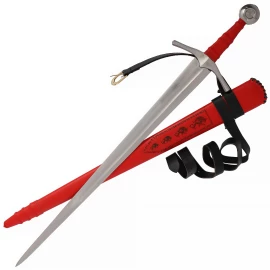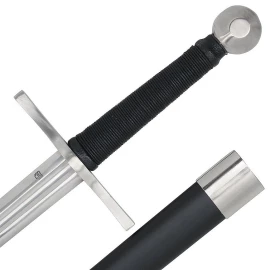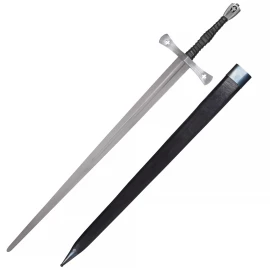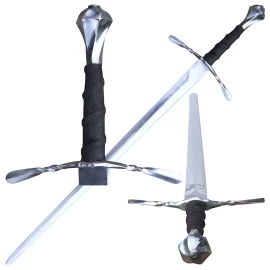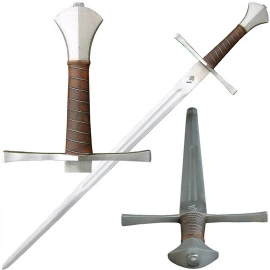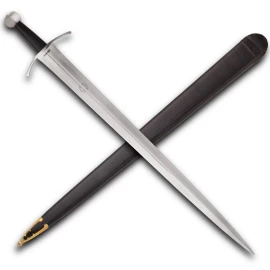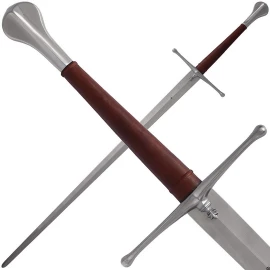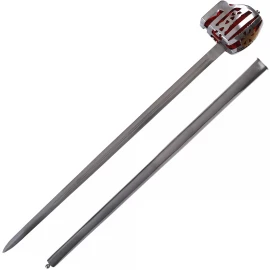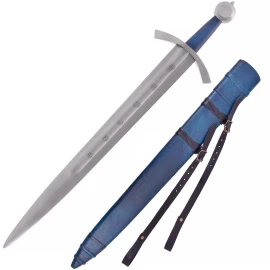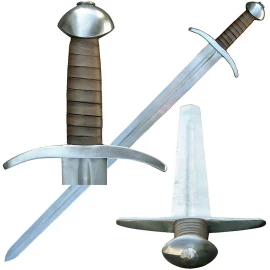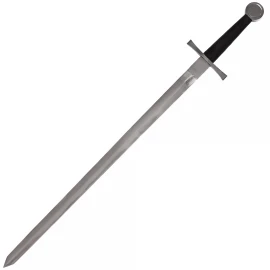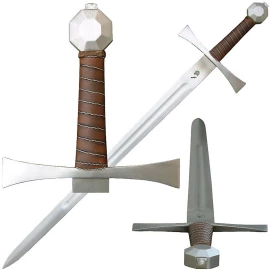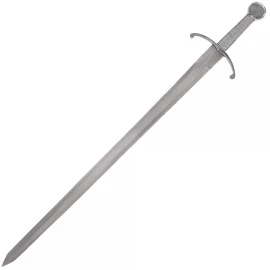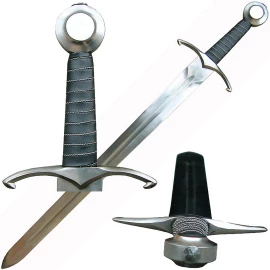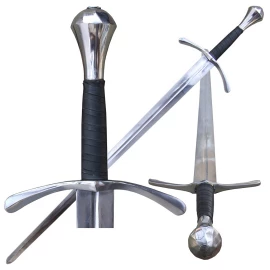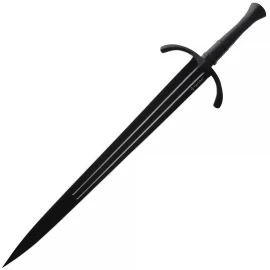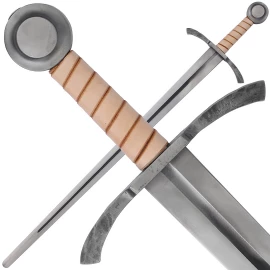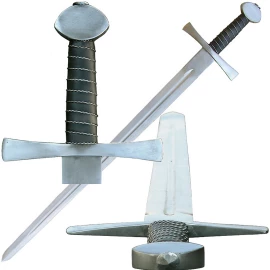English or French Single-Edged Arming Sword, licensed by the Royal Armouries
1xAn unusual single-edged arming sword of the mid-15th century, reputedly from the Castillon group of swords found in a nearby river and purchased by the Royal Armouries in 1984. Over 80 swords, as well as other weapons, were reputedly recovered from this one archaeological find, but this sword is without direct comparison in that group, having a distinctive hilt and very unusual single-edged blade. At first sight it looks like a regular double-edged arming sword with a central tip, but on closer inspection it has a single-edged blade, of wedge cross-section, having a false edge on the back of the blade near the tip. The blade is remarkably wide and thin, with a very acute edge geometry leading to a fine edge, sharing some physical similarities with other single-edged swords such as falchions. The crossguard quillons end in curled tips to retain an opponent’s blade, the asymmetrical grip is located towards the back edge, and the squat scent stopper pommel makes the short grip comfortable to hold. This sword could have been carried by any professional soldier of the late Hundred Years War, from a well-equipped archer to a man-at-arms or knight, or indeed as a civilian sidearm, perhaps with a buckler. Swords with comparable hilt forms are shown in art until the end of the 15th century. This sword feels very nimble, and it is deceptively light compared to its width, due to the thinness of the blade and distal taper.While it could thrust effectively against unarmored targets, it seems to be optimized for cutting, the tip being broader and the blade more flexible than a typical arming sword of the time. More information...
Notify me when the item is in stock.
We will inform you as soon as we stock up.
English or French Single-Edged Arming Sword, licensed by the Royal Armouries
Royal Armouries Sword #IX.2638.
This replica is crafted with a better blade than the original; the blade is hand forged by an experienced, skilled blacksmith exactly in the same manner as the original, but with superior modern 1080 high carbon steel that is fully tempered and is distally tapered for proper weight distribution.
The sheath is made to replicate one of the period, with a wood body and covered with leather. The tip is reinforced with a brass chape. At the throat, the leather extends upward and covers part of the guard at the ricasso.
Includes a certificate of authenticity on heavy stock
Windlass Classic Wax and polishing cloth are included.
Specifications:
- Overall length: 94cm
- Blade length: 79cm, single edge
- Guard: 18cm wide
- Blade width at ricasso 60mm
- Blade is distally tapered: 3,9mm thick at guard, 2.3mm at tip
- The blade is semi-sharp. The striking edge approx. 1mm thick
- Weight: 1.335 g
A top-quality replica made by Windlass Steelcrafts®
Write to our specialist









